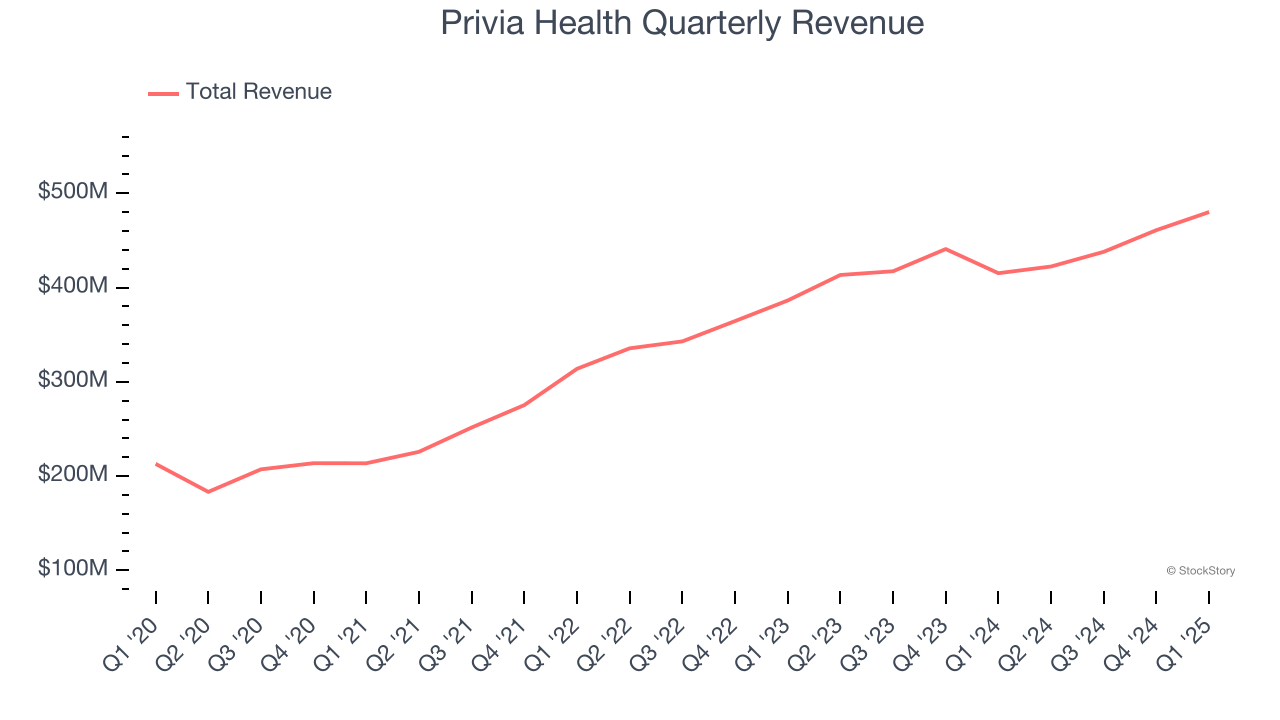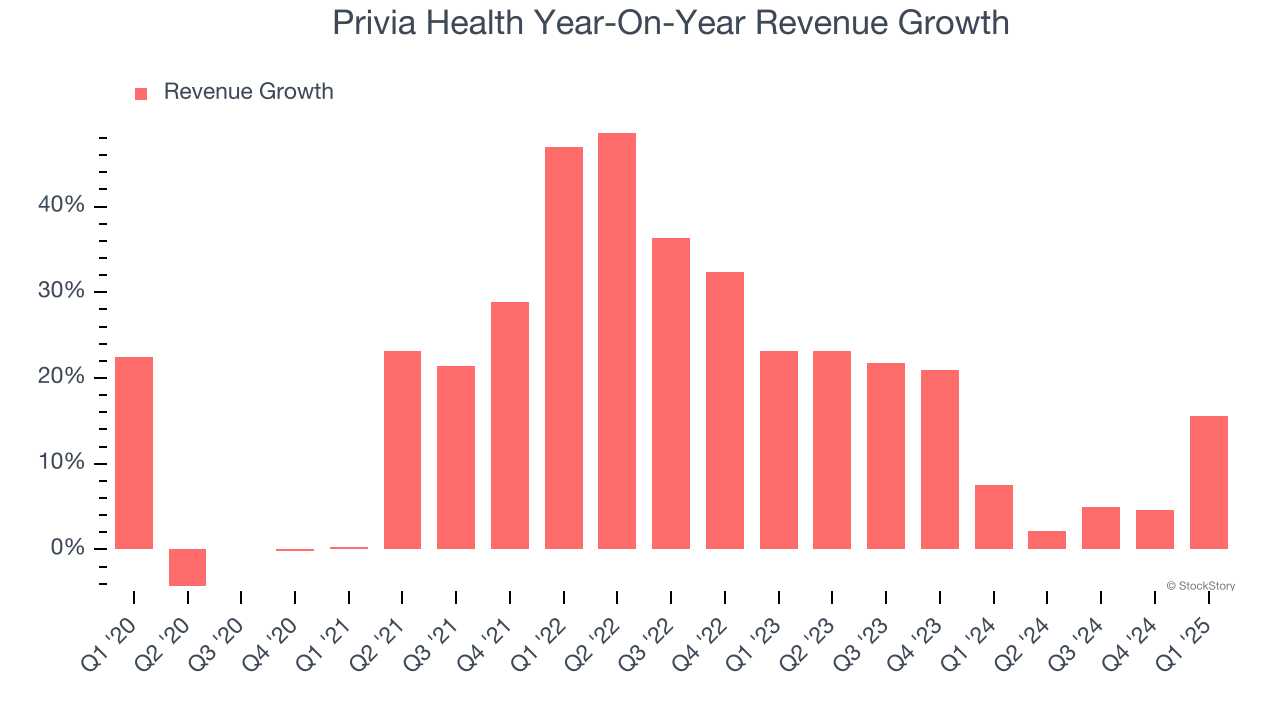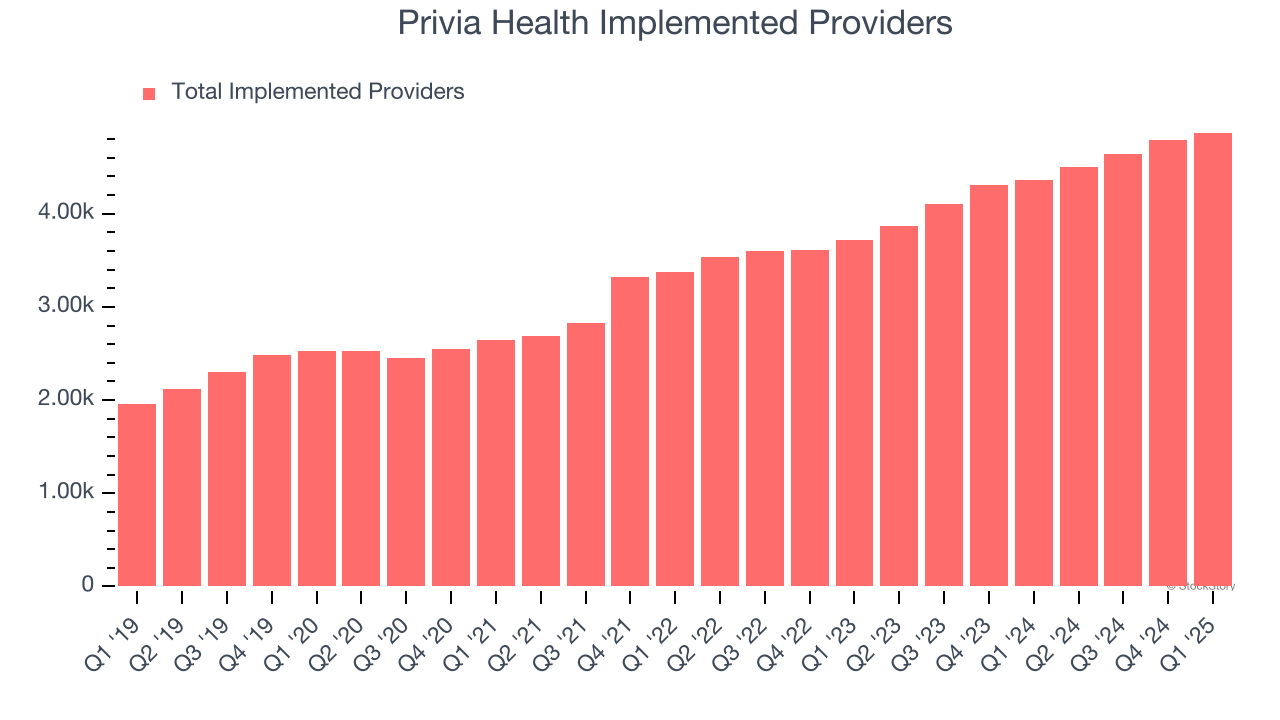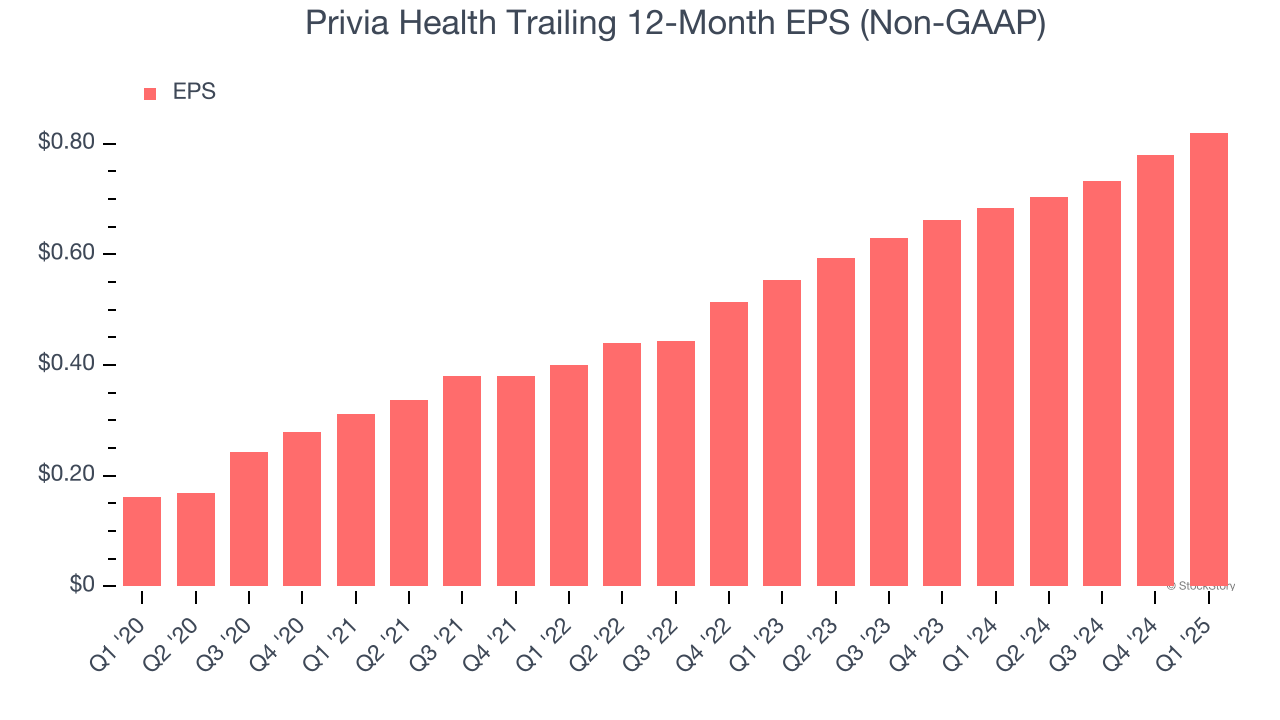
Healthcare tech company Privia Health Group (NASDAQ: PRVA) reported Q1 CY2025 results exceeding the market’s revenue expectations, with sales up 15.6% year on year to $480.1 million. On the other hand, the company’s full-year revenue guidance of $1.85 billion at the midpoint came in 1% below analysts’ estimates. Its non-GAAP profit of $0.22 per share was 21% above analysts’ consensus estimates.
Is now the time to buy Privia Health? Find out by accessing our full research report, it’s free.
Privia Health (PRVA) Q1 CY2025 Highlights:
- Revenue: $480.1 million vs analyst estimates of $450.7 million (15.6% year-on-year growth, 6.5% beat)
- Adjusted EPS: $0.22 vs analyst estimates of $0.18 (21% beat)
- Adjusted EBITDA: $26.92 million vs analyst estimates of $23.5 million (5.6% margin, 14.5% beat)
- The company reconfirmed its revenue guidance for the full year of $1.85 billion at the midpoint
- EBITDA guidance for the full year is $107.5 million at the midpoint, in line with analyst expectations
- Operating Margin: 1.1%, in line with the same quarter last year
- Free Cash Flow was -$24.06 million compared to -$33.14 million in the same quarter last year
- Sales Volumes rose 11.7% year on year (17.3% in the same quarter last year)
- Market Capitalization: $2.83 billion
Company Overview
Operating in 13 states and the District of Columbia with over 4,300 providers serving more than 4.8 million patients, Privia Health (NASDAQ: PRVA) is a technology-driven company that helps physicians optimize their practices, improve patient experiences, and transition to value-based care models.
Sales Growth
A company’s long-term sales performance is one signal of its overall quality. Even a bad business can shine for one or two quarters, but a top-tier one grows for years. Luckily, Privia Health’s sales grew at an impressive 16.9% compounded annual growth rate over the last five years. Its growth beat the average healthcare company and shows its offerings resonate with customers.

We at StockStory place the most emphasis on long-term growth, but within healthcare, a half-decade historical view may miss recent innovations or disruptive industry trends. Privia Health’s annualized revenue growth of 12.3% over the last two years is below its five-year trend, but we still think the results suggest healthy demand. 
Privia Health also reports its number of implemented providers, which reached 4,871 in the latest quarter. Over the last two years, Privia Health’s implemented providers averaged 14.1% year-on-year growth. Because this number is better than its sales growth, we can see the company’s underlying demand decreased. 
This quarter, Privia Health reported year-on-year revenue growth of 15.6%, and its $480.1 million of revenue exceeded Wall Street’s estimates by 6.5%.
Looking ahead, sell-side analysts expect revenue to grow 6.1% over the next 12 months, a deceleration versus the last two years. Despite the slowdown, this projection is above average for the sector and indicates the market is forecasting some success for its newer products and services.
Software is eating the world and there is virtually no industry left that has been untouched by it. That drives increasing demand for tools helping software developers do their jobs, whether it be monitoring critical cloud infrastructure, integrating audio and video functionality, or ensuring smooth content streaming. Click here to access a free report on our 3 favorite stocks to play this generational megatrend.
Operating Margin
Operating margin is an important measure of profitability as it shows the portion of revenue left after accounting for all core expenses – everything from the cost of goods sold to advertising and wages. It’s also useful for comparing profitability across companies with different levels of debt and tax rates because it excludes interest and taxes.
Although Privia Health was profitable this quarter from an operational perspective, it’s generally struggled over a longer time period. Its expensive cost structure has contributed to an average operating margin of negative 2.6% over the last five years. Unprofitable healthcare companies require extra attention because they could get caught swimming naked when the tide goes out. It’s hard to trust that the business can endure a full cycle.
Looking at the trend in its profitability, Privia Health’s operating margin decreased by 2.1 percentage points over the last five years, but it rose by 1.2 percentage points on a two-year basis. Still, shareholders will want to see Privia Health become more profitable in the future.

In Q1, Privia Health generated an operating profit margin of 1.1%, in line with the same quarter last year. This indicates the company’s overall cost structure has been relatively stable.
Earnings Per Share
We track the long-term change in earnings per share (EPS) for the same reason as long-term revenue growth. Compared to revenue, however, EPS highlights whether a company’s growth is profitable.
Privia Health’s EPS grew at an astounding 38.5% compounded annual growth rate over the last five years, higher than its 16.9% annualized revenue growth. However, we take this with a grain of salt because its operating margin didn’t expand and it didn’t repurchase its shares, meaning the delta came from reduced interest expenses or taxes.

In Q1, Privia Health reported EPS at $0.22, up from $0.18 in the same quarter last year. This print easily cleared analysts’ estimates, and shareholders should be content with the results. Over the next 12 months, Wall Street expects Privia Health’s full-year EPS of $0.82 to grow 4.1%.
Key Takeaways from Privia Health’s Q1 Results
We were impressed by how significantly Privia Health blew past analysts’ revenue expectations this quarter. We were also glad its EPS outperformed Wall Street’s estimates. On the other hand, its full-year revenue guidance slightly missed. Overall, this print had some key positives. The stock remained flat at $23.35 immediately after reporting.
Privia Health put up rock-solid earnings, but one quarter doesn’t necessarily make the stock a buy. Let’s see if this is a good investment. The latest quarter does matter, but not nearly as much as longer-term fundamentals and valuation, when deciding if the stock is a buy. We cover that in our actionable full research report which you can read here, it’s free.





